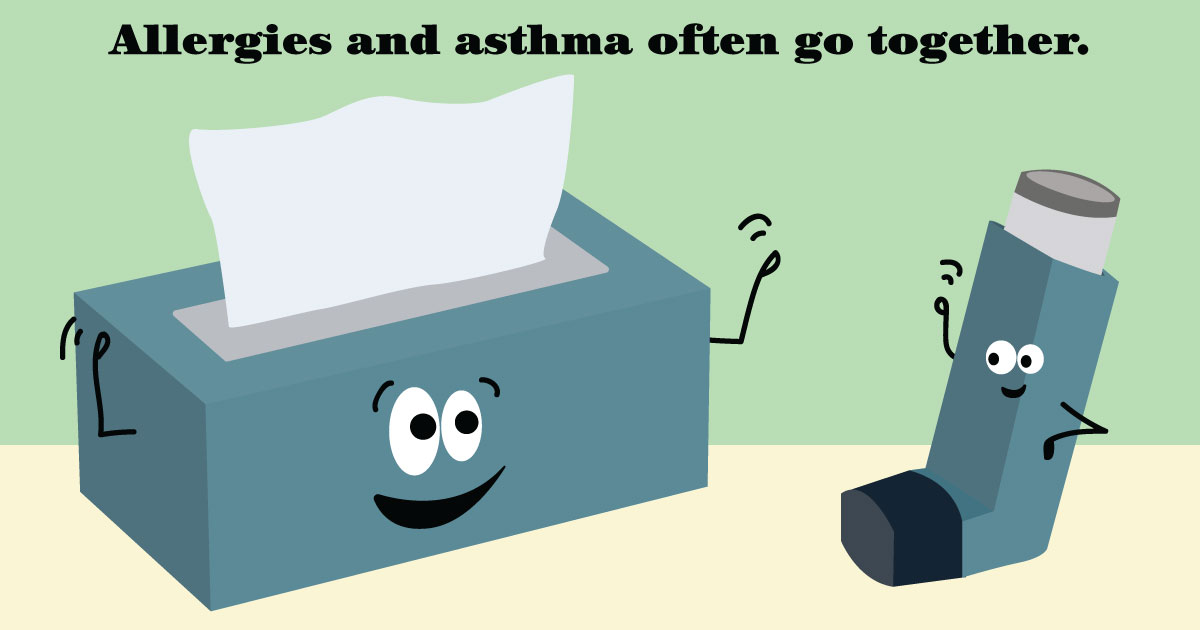
Double trouble: That’s a good description of allergies and asthma. The two often go together.
For many people, the same allergies that give them sneezing fits and a runny nose also bring on asthma attacks. In fact, allergic asthma—where allergies are triggers for asthma symptoms—is the most common kind of asthma. It affects about two-thirds or more of people with asthma.
That means if you have allergies, it’s important to watch out for asthma symptoms and to tell your doctor if you have any. They include:
- Coughing.
- Wheezing—a whistling sound when breathing, especially when exhaling.
- Difficulty breathing.
- Shortness of breath.
- Chest tightness.
If you do have asthma, your doctor can help you treat it. Be aware too that if you’ve already been diagnosed with asthma, allergies could be making it worse.
Take control
A key part of treating allergic asthma is identifying what you’re allergic to—sometimes with a blood or skin test—and then limiting your exposure. Pollen, mold, dust mites and pet dander are all common culprits.
These tips from the American College of Allergy, Asthma & Immunology can help you avoid:
- Pollen. Check pollen counts and try to avoid going outside when they’re highest. Keep your windows closed during pollen season too.
- Mold and dust mites. Try to keep the humidity in your home below 50 percent.
- Pet dander. Vacuum frequently and wash upholstery. And always keep your pet out of your bedroom so you can sleep symptom-free.
What exactly is hay fever? It’s just a common name for seasonal allergies—read more here.
Original source: https://pennstatehershey.netreturns.biz/HealthInfo/Story.aspx?StoryId=633c973a-754e-44b8-96eb-c5cc677ab165#.Xpc-SatKhBw